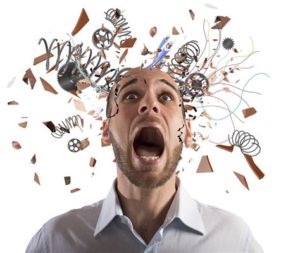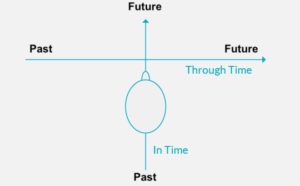- You are here:
- Home »
- Blog »
- Exploring Your Internal Map Of Reality (Series) »
- Exploring Your Internal Map Of Reality Part 7: Metaprograms Part 4
Exploring Your Internal Map Of Reality Part 7: Metaprograms Part 4
Emotional Stress Filter
 This filter determines how people deal with a stressful situation.
This filter determines how people deal with a stressful situation.
There are several ways of doing this – by thinking about it, by getting into the feeling of the situation, or actively choosing between the two.
This is similar to the ‘Thinker/Feeler‘ personality of Myers-Briggs. The ‘Thinker’ will use logic and reasoning to deal with a stressful situation, whereas the ‘Feeler’ will associate into the feeling to deal with it.
The ‘Thinker’ is essentially dissociated from the feeling (see the article on Modalities) and can respond in a logical way to the situation. Whilst this has its advantages, it also has some disadvantages in that they can’t empathize with other people.
On the other hand, ‘Feelers’ generally tend to be more empathetic with people and situations. People who prefer a kinaesthetic approach are generally better at physical activities and sports as well. But they are often not able to think logically through the situation to be successful.
The key to success in this area is to be able to move between one and the other at will, and as appropriate.
Time Storage filter
 This filter is related to the Judger/Perceiver type from Myers-Briggs.
This filter is related to the Judger/Perceiver type from Myers-Briggs.
We all have perceptions of the way time flows from the past to the future.
There are two possibilities here: ‘In Time’ and ‘Through Time.’
People whose filter is ‘In Time’ tend to correspond with the ‘Judger’ personality. For those whose filters is ‘Through Time’ tend to be the ‘Perceiver’ personality.
 ‘Through Time’ people usually see their timeline flowing through them from the past (behind them) to the future (in front of them). They tend to be very casual about time and are often late for appointments and miss the bus or train.
‘Through Time’ people usually see their timeline flowing through them from the past (behind them) to the future (in front of them). They tend to be very casual about time and are often late for appointments and miss the bus or train.
‘In Time’ people usually see the entire timeline in front of them. with the past to the left and the future to the right. They tend to make schedules for everything and get annoyed if things like the train is late or they miss the bus. They have lists for everything and plan things out to the minutest detail – even when they are on holiday!
There are times when one side of the filter is more appropriate than the other.
For instance when you go on holidays you probably don’t want to think too much about time once you get to your destination so you need to be ‘Through time’. However when you travel to your destination you probably want to be ‘in time’ for the plane or train.
Thus there is a way that you can change from ‘In Time’ to ‘Through Time’ and vice versa. NLP Timeline Therapy® is a way that you can do this. Basically, you float up above your timeline, change the orientation to the way you want it, then float back down. If you would like to know more about this, please go to this web site
Modal Operator Sequence
 A modal operator is something in language that modifies a verb. For instance, the phrase ‘I go to the beach’ could be modified to
A modal operator is something in language that modifies a verb. For instance, the phrase ‘I go to the beach’ could be modified to
‘I must go to the beach’
‘I could go to the beach’ or
‘I choose to go to the beach’.
This filter is related to 2 other metaprograms: the Direction Filter (towards/away) and the Reason Filter (Possibility/Necessity)
The way this is ‘elicited’ (determined) is by asking yourself a question such as:
‘What is the last thing I say to myself just before I get up in the morning’
If you say ‘I’d better get up’ or ‘it’s time to get up’, then you are talking in terms of necessity (reason filter).
If you say to yourself ‘What can I do today’ then you are talking in terms of possibility (reason filter).
If you say ‘I’m getting up now’ then you are speaking in terms of choice or decision.
If you say ‘I want to get up now’ then you are talking in terms of desire.
The bottom line with this sequence is that if you talk in terms of desire and possibility, you will be better served than if you talk in terms of necessity or impossibility.
If you need to motivate yourself to do something, put it in terms of possibility rather than necessity.
click here to continue to part 5
